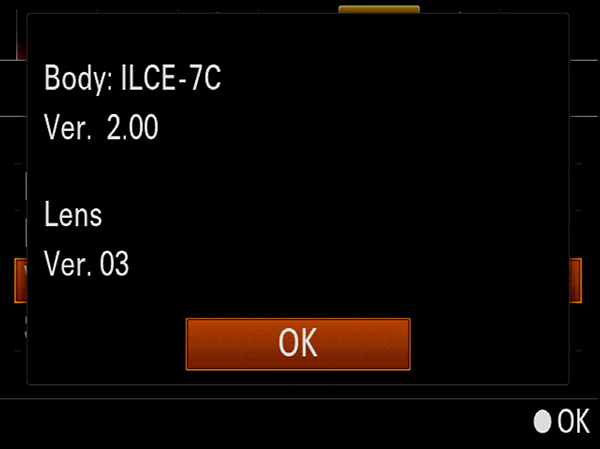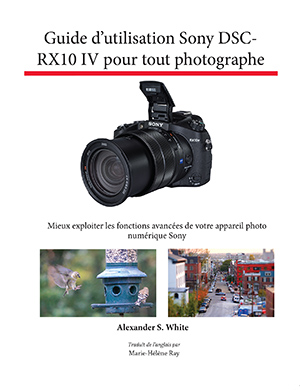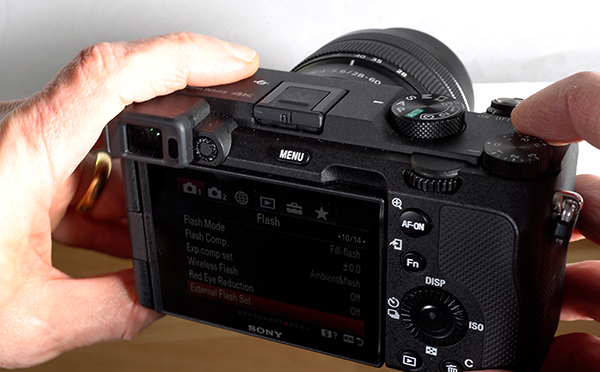Today I finally found time to do something I have been wanting to try for a while — take digiscoping shots with the Sony DSC-RX100 camera, using a Celestron spotting scope.
When I published Photographer’s Guide to the Sony DSC-RX100, I included a brief mention of digiscoping, which is the practice of connecting a digital camera to a spotting scope to get a magnified view of the subject, usually wildlife. At the time that book was being written, I did not have a spotting scope. I included in the book a sample shot taken through the telescope that I used for taking a shot of the moon, but that telescope is quite bulky and not designed for terrestrial viewing, so it is not a good substitute for a spotting scope.
Since that time I have obtained a Celestron Regal 80F-ED spotting scope, which seems to be of very good quality and is relatively affordable. Today I took the Sony RX100 and connected it to the scope using the same system described in the book for attaching the camera to a telescope. That is, I used the Lensmate filter adapter, which consists of two small, plastic pieces — a “receiver” that is glued to the camera’s lens, and the adapter itself, which is attached to the receiver by a bayonet system. The adapter accepts any 52mm filter or other accessory. In this case, I had to attach a 1.25-inch telescope eyepiece to the camera so the camera could be connected to the spotting scope using that eyepiece. To connect the camera to the eyepiece, I obtained an adapter kit for the 52mm diameter filter size from telescopeadapters.com. (The part number for the kit is Digi-Kit #DKSR52T.)
I should emphasize that the connection between the camera and the spotting scope relies on the plastic filter adapter and is not a tremendously strong connection, so be careful if you should try this system for connecting the camera to any kind of scope. I know there are other adapters and systems for connecting the RX100 to spotting scopes, and some of them may be better suited for this activity. I just tried this out because I happened to have this adapter available.
With the camera attached to the eyepiece, I removed the optical eyepiece that came with the scope and inserted the camera with the telescope eyepiece into the spotting scope in its place. I then went off to nearby Deep Run Park, where there normally are ducks and geese at this time of year.
At the park, I set up the camera and scope using a Manfrotto 190CXPRO4 tripod with a Manfrotto 128RC Mini Video Fluid Head. I set the camera to capture Raw images using Program mode and turned on continuous shooting. With this setup, there is considerable vignetting because the camera is shooting through a tube. I zoomed the lens of the RX100 all the way in to the extent of its optical zoom, which reduced the vignetting, though the vignetting is still noticeable. (I left the images below uncropped, so you can see how much vignetting took place, darkening the edges of the images taken through the scope.)
I adjusted the focus on the spotting scope to be as sharp as possible, and I used single-autofocus mode with the RX100. This setup achieved fairly sharp focus. Of course, when you are shooting through the lens of the camera and also through the lens of the spotting scope and eyepiece, the images are not going to be as sharp as if they were taken through a long lens that is attached directly to a DSLR camera.
Anyway, the gallery below tells the story in a few images, showing the equipment that I used, then a couple of shots taken with the Sony RX100 through the spotting scope. Finally, there is a single shot taken of the ducks and geese from the same location as the digiscoping shots, but using the camera’s full optical zoom without the scope. I included that shot just to show how much the images were magnified by using the scope.
Overall, I was pleased that it was possible to get fairly good shots with the RX100 through the spotting scope.











Not bad, but, to what end? What equivalent focal length was achieved? Seems like better results could be obtained with a DSLR and zoom for similar costs – and end up with a more versatile system.
You are exactly right. If you are setting out to capture good shots of wildlife, I would not recommend using the RX100 with a spotting scope. My focus was on this particular model of camera and showing one of various ways in which it can be used. If you have an RX100 and a spotting scope, you can use them together, if you want to. That was all I was trying to show.
Hi. I have a Nikon field scope 2 I bought back in 1990. I now have an Sony rx100 mk 3. Is it possible to connect them so I can photograph birds in the garden
I’m not familiar with the Nikon scope, but if it uses a standard, removable eyepiece, this should be something you can do. You would need to get a filter adapter that fits this camera, such as the one from Sony, model no. VFA-49A1, or one from lensmateonline.com, or the MagFilter one. Then you need to get a telescope adapter kit, which should be part no. DKSR49T, from telescopeadapters.com. Then attach the filter adapter to the camera, attach the scope’s eyepiece to the telescope adapter, and attach that adapter to the filter adapter. You have to be quite careful, because the assembly is fragile, and the weight of the scope and adapter needs to be supported so it doesn’t damage the camera. Once it’s all assembled, you should be able to get some good shots, though probably with considerable vignetting.
Just tried digiscoping with a Swaovsky scope and an RX-100 … what immediately struck me was that it is VERY easy to hand hold and centre the camera on the slightly dished rubber eye-piece outer on the scope and get excellent photographs. I have played with digiscoping for years going from an early Nikon digital camera over ten years ago up to the Sony alpha-7 full-frame mirrorless but pretty much gave up n the game because all those need adapters and stuff to carry and fiddle with. By the time you have it set up the bird has flown but quickly taking the RX-100 from my pocket it’s almost immediate that you can get “on the bird” and grab a picture. That speed is a clincher.
Sounds like a great approach; thanks for posting that information!